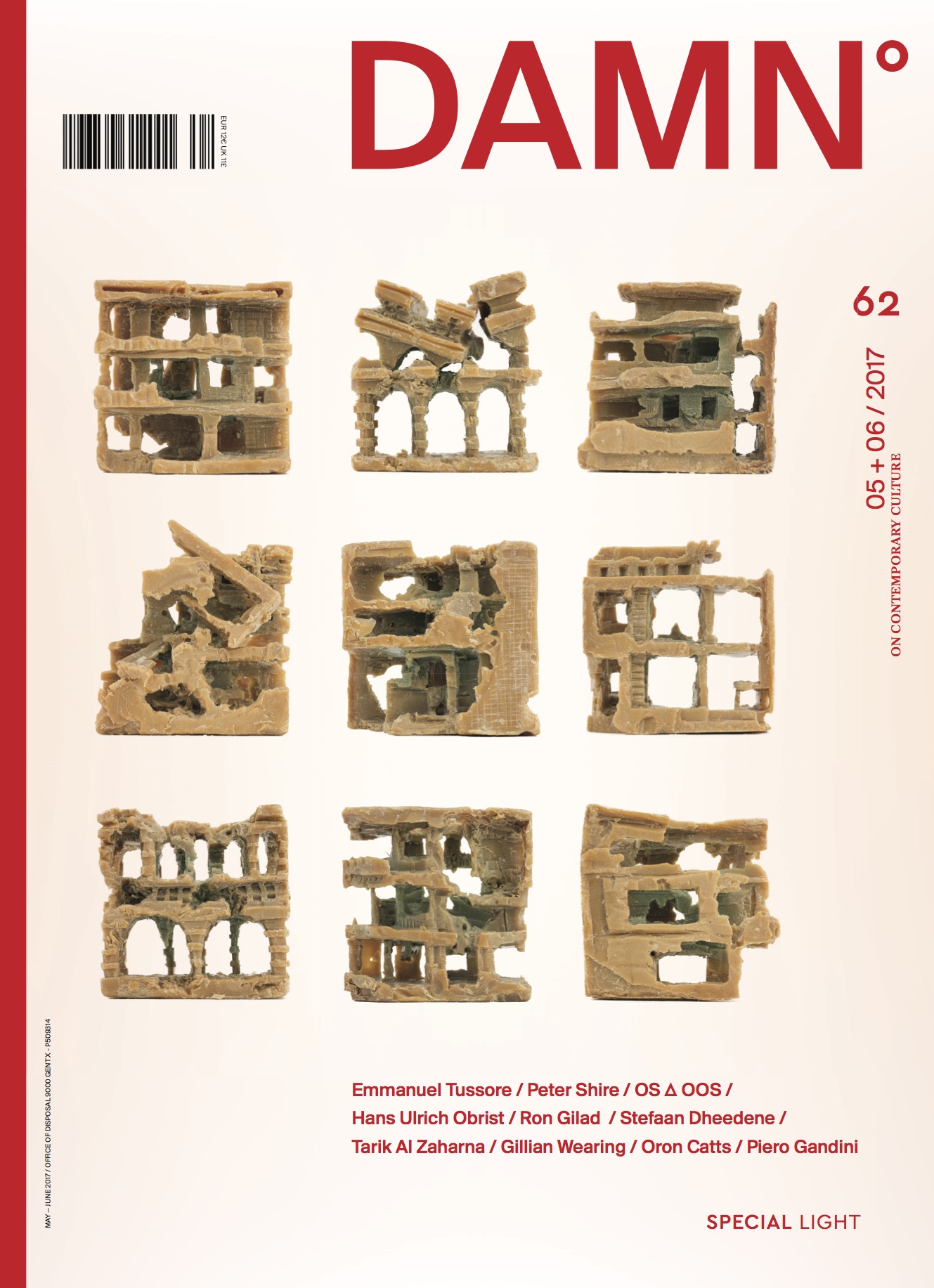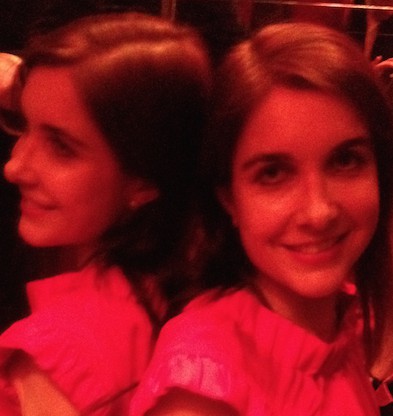A James Turrell installation with ever-changing colours of light can captivate art lovers. Now the experience of enhancing our homes with coloured, wireless lighting is an affordable design trend that is becoming increasingly personalised. At Euroluce, the leading lighting fair that takes place during the Salone del Mobile in Milan, Philips presented its latest developments in transforming interior spaces through ambient lighting. Designed with versatility in mind, the brand’s connected lighting system, Philips Hue, enables the tone, strength, and colour of the light to be controlled by sensors and switches. Atmospheres and moods can be set – from soft and romantic to bright and energising – at the touch of an app or at the sound of your voice. But this approach to human-centric lighting is more than merely playful. Beyond impressing guests, controlling the light can help to improve wellbeing, such as by setting it to come on dimly in the morning and then gradually brighten, and to gradually darken at night-time.
Philips launched the first version of Hue in 2013, followed by a second version last year, enabling lighting environments to be programmed for different rooms and seasons. “The settings can be finely tuned and precisely tweaked, and once set, the lighting can be forgotten about”, says Pierre-Yves Panis, head of design at Philips Lighting, which has produced pendant, table, and portable lamps that use Hue technology. “So I can have one kind of light in the morning, something else during the day and in the evening, and when I pour myself a glass of wine, something else again.” The latest addition to the Hue family is a candlelight bulb available in ‘white ambiance’ or ‘colour ambiance’, with a range of more than 16 million colours. Deals have been signed with Luceplan and Modular Lighting Instruments, which see these lighting companies integrating Hue into their designs.
 Meanwhile, Basten Leijh has incorporated Hue in some of his products, such as the Médard spotlights for Modular, as has Louis Poulsen.
Meanwhile, Basten Leijh has incorporated Hue in some of his products, such as the Médard spotlights for Modular, as has Louis Poulsen.
Hue is far from an end game with Philips. The brand is developing an eco-system with other companies – Amazon Alexa, Apple HomeKit, Google Home, Nest, Samsung SmartThings – so that the technology can be built into their respective proposals. For instance, Amazon Alexa, Amazon’s voice service, enables the user to control the lighting through its devices, Echo and Dot, which can be installed in the home. By using Alexa’s default command and saying: Alexa, turn on the lights, the room lights up without needing to flick a switch.
 Voice detection and activation are developing fast, according to Panis. “The model we demonstrated in Milan still required you to be in a relatively quiet space”, Panis says. “But we will see the technology evolving rapidly, to the point where you won’t have to think twice about what you’re saying. Imagine that you would say: Hey, I’m up, give me some light. It might still sound and look a bit awkward to be talking to a light, but remember that three or four years ago, talking to your smartphone was considered science fiction-ish.”
Voice detection and activation are developing fast, according to Panis. “The model we demonstrated in Milan still required you to be in a relatively quiet space”, Panis says. “But we will see the technology evolving rapidly, to the point where you won’t have to think twice about what you’re saying. Imagine that you would say: Hey, I’m up, give me some light. It might still sound and look a bit awkward to be talking to a light, but remember that three or four years ago, talking to your smartphone was considered science fiction-ish.”
In the near future, voice-sensitive sensors could recognise various people’s voices and the device could deliver the lighting chosen by each individual. “It could recognise that the voice is yours, not your partner’s, and the lighting would be specific to you at that moment”, says Panis. “Voice detection will become increasingly Philips refined and available in more languages, whether it’s through Amazon Alexa, Apple’s HomeKit, or Google Assistant”, Panis continues. For example, Alexa technology currently only exists in English and German.

 These smart-home integrations are intended to extend the “fun and functionality” of lighting. However, some people are wary of voice detection, Panis admits. “In some markets, there will always be a degree of defiance because of the [Orwellian] notion that Big Brother is watching you”, he says. “Not all consumers are comfortable talking to machines or with systems that want to know your coordinates. We don’t collect or store any information about what users say, other than to improve the customer experience of our products, systems, and services.”
These smart-home integrations are intended to extend the “fun and functionality” of lighting. However, some people are wary of voice detection, Panis admits. “In some markets, there will always be a degree of defiance because of the [Orwellian] notion that Big Brother is watching you”, he says. “Not all consumers are comfortable talking to machines or with systems that want to know your coordinates. We don’t collect or store any information about what users say, other than to improve the customer experience of our products, systems, and services.”
The sensorial aspect of Hue could be broader, as Panis hopes it will be. “It’s an eco-system that will become more natural – we can imagine the light being controlled by a gesture, not just by a sound. What if you wave your hand and get the system to remember things, or clap to turn a light on and off? Maybe there are other gestures that could be more intuitive.”
The Asian countries, especially China, share North America’s enthusiasm for Hue, whereas Germany is one of the most eager in Europe. “We hosted some of our Chinese colleagues yesterday and played with Hue for a few hours in order to curate the right set of colours for two specific events in China: a wedding and Chinese New Year”, says Panis.
Hue lighting can also be synced to electrical products such as televisions and music systems. “The lighting can respond to something on TV, like the cheers during a football match or singing, with LEDs matching the colour schemes on the screen”, he says, “It can enhance the experience and make you feel a part of what you’re watching. We’re doing tests where we prolong the experience by looking at what’s happening on the screen and predicting what’s happening in the next scene, and making your lighting react accordingly.”
On an architectural level, Modular Lighting Instruments is implementing Hue in residential and hospitality projects. “We recognised the flexibility that Hue gives consumers but also understood its handicap in the architectural lighting segment, because our customers don’t come to us asking about a lamp but about a project”, says Bart Maeyens, general manager of Modular Lighting Instruments. Through discussions with Philips, the company created a system called Connected that allows Hue to function in residences of 200-400 square metres. “The game-changer is that with Connected, you can alter the lighting daily via your phone, and every day there is somebody [such as Google or Amazon Alexa] adding to the features of Connected.”
Philips launched the first version of Hue in 2013, followed by a second version last year, enabling lighting environments to be programmed for different rooms and seasons. “The settings can be finely tuned and precisely tweaked, and once set, the lighting can be forgotten about”, says Pierre-Yves Panis, head of design at Philips Lighting, which has produced pendant, table, and portable lamps that use Hue technology. “So I can have one kind of light in the morning, something else during the day and in the evening, and when I pour myself a glass of wine, something else again.” The latest addition to the Hue family is a candlelight bulb available in ‘white ambiance’ or ‘colour ambiance’, with a range of more than 16 million colours. Deals have been signed with Luceplan and Modular Lighting Instruments, which see these lighting companies integrating Hue into their designs.

Philips
Hue is far from an end game with Philips. The brand is developing an eco-system with other companies – Amazon Alexa, Apple HomeKit, Google Home, Nest, Samsung SmartThings – so that the technology can be built into their respective proposals. For instance, Amazon Alexa, Amazon’s voice service, enables the user to control the lighting through its devices, Echo and Dot, which can be installed in the home. By using Alexa’s default command and saying: Alexa, turn on the lights, the room lights up without needing to flick a switch.

Philips
In the near future, voice-sensitive sensors could recognise various people’s voices and the device could deliver the lighting chosen by each individual. “It could recognise that the voice is yours, not your partner’s, and the lighting would be specific to you at that moment”, says Panis. “Voice detection will become increasingly Philips refined and available in more languages, whether it’s through Amazon Alexa, Apple’s HomeKit, or Google Assistant”, Panis continues. For example, Alexa technology currently only exists in English and German.

Philips

Philips and at Euroluce 2017
The sensorial aspect of Hue could be broader, as Panis hopes it will be. “It’s an eco-system that will become more natural – we can imagine the light being controlled by a gesture, not just by a sound. What if you wave your hand and get the system to remember things, or clap to turn a light on and off? Maybe there are other gestures that could be more intuitive.”
The Asian countries, especially China, share North America’s enthusiasm for Hue, whereas Germany is one of the most eager in Europe. “We hosted some of our Chinese colleagues yesterday and played with Hue for a few hours in order to curate the right set of colours for two specific events in China: a wedding and Chinese New Year”, says Panis.
Hue lighting can also be synced to electrical products such as televisions and music systems. “The lighting can respond to something on TV, like the cheers during a football match or singing, with LEDs matching the colour schemes on the screen”, he says, “It can enhance the experience and make you feel a part of what you’re watching. We’re doing tests where we prolong the experience by looking at what’s happening on the screen and predicting what’s happening in the next scene, and making your lighting react accordingly.”
On an architectural level, Modular Lighting Instruments is implementing Hue in residential and hospitality projects. “We recognised the flexibility that Hue gives consumers but also understood its handicap in the architectural lighting segment, because our customers don’t come to us asking about a lamp but about a project”, says Bart Maeyens, general manager of Modular Lighting Instruments. Through discussions with Philips, the company created a system called Connected that allows Hue to function in residences of 200-400 square metres. “The game-changer is that with Connected, you can alter the lighting daily via your phone, and every day there is somebody [such as Google or Amazon Alexa] adding to the features of Connected.”
 Philips
Philips
 Philips
Philips
 Philips
Philips
 Philips
Philips



